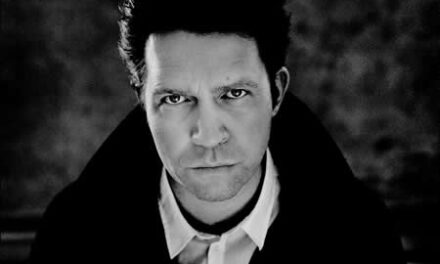Memorial Hall was filled with music lovers anticipating a significant American premiere of Four Spirits for piano and orchestra by renowned composer Chen Yi (b. 1953). In conjunction with the American tour of the China Philharmonic Orchestra, Carolina Performing Arts commissioned this substantial 26-minute work for University of North Carolina Associate Professor Clara Yang who is active as both a performer and teacher. Although the orchestra was founded in 2000 with the patronage of leaders of the Chinese Communist Party and the Chinese government, based upon this concert, it has quickly become a world-class ensemble. Music Director Long Yu is an advocate of the standard repertoire within China while advocating for contemporary Chinese composers internationally.
An overall goal of Chen is to forge connections between Eastern and Western approaches to composition. Her aim over the four movements of Four Spirits is for “the piano and the orchestra become an organic whole, symbolizing the spirits of the culture from the East.” The movement titles represent “the four sacred animals in Chinese legend.” Tunes in the style of central Chinese folk songs flavor the first movement, “The Blue Dragon in the East.” A mythic animal combining turtle and snake characteristics is represented in “The Black Xuanwu in the North” which features dark and ominously layered music. The shortest third movement, “The White Tiger in the West,” dramatically exploits “patterns in the extreme registers on the piano.” A southern Chinese folk tune adds color to “The Red Phoenix in the South,” the last movement for which Chen composed “fast, lively, fluent, and vibrant” music. It received its world premiere November 18, 2016 by the same forces in the Forbidden City Concert Hall, Beijing, China.
There are very few measures within Four Spirits that gives the piano soloist a moments rest, and a great deal calls for either extremes of dynamics or a wide palette of color. Yang was indefatigable in meeting every unconventional demand of Chen’s frequently dense score. Her power was evident in the descending, thundering fff chords she tossed off before the strings took up a sweeping wave of sound suggestive of the first movement’s dragon. This movement featured lots of repeated keyboard treble doodling. Strings often played extended stretches of very high harmonics. The second movement had a dark and ominous atmosphere. The third movement featured Yang with independent hands repeatedly approaching the middle of the keyboard. Low strings executed Bartók or snap pizzicatos in which strings are snapped loudly against their fingerboards. At one point, Yang conjured up the eerie sound of a child’s toy piano.
Considering Chen’s extensive use of massed brass and percussion, including a wide selection of gongs, the orchestra only covered the piano briefly in the last three movements. The concertmaster had a fine solo in the third movement. From time to time clarinets and oboes played in their highest registers evoking the sound of non-western instruments. Conductor Yu kept close co-ordination between Yang and the orchestra achieving miraculous balancing between them.
The frequently performed Symphony No. 5 in D minor, Op. 47 by Dmitri Shostakovich (1906-75) was an ideal vehicle to judge the quality of this relatively young orchestra. After Shostakovich had a precipitous fall from political grace after a critic (likely Joseph Stalin) condemned his opera Lady Macbeth of the Mtsensk (1936) as “muddle instead of music,” he lost much of his livelihood and lived with a suitcase packed in case he was packed off to Siberia or worse. Many of his greatest works, his quartets and his Fourth Symphony, were consigned to the desk drawer to await Stalin’s passing. The extraordinary public reception of Shostakovich’s Fifth Symphony in 1937 marked a turning point in his career. Like many of his works, the symphony can be heard on two levels: on one as a glorification of “Socialist Realism,” on another as mockery of the same tyrannical ideal. It is in four movements. The long slow opening movement builds to a huge climax. The following Scherzo recalls Mahler at his most grotesque. The extraordinary Largo gradually builds in intensity and has a marvelous middle section full of melody. All the stops are pulled out for the brutal intensity of the Finale.
Yu led his disciplined and skilled musicians in a profound and probing interpretation of the symphony well within current performing tradition. Orchestra balance and musical line were beautifully controlled. Rhythms were vital. Shostakovich gives all principal players solos, and every member rose to the challenge brilliantly. Among them were the sweetly played violin of the concertmaster, solo cello, flute, oboe, bassoon and contrabassoon, French horn, harps, and percussion – not the least, the brilliant, powerful timpanist. The third movement Largo was played finer than I can ever recall hearing it.
An enthusiastic and sustained standing ovation led Yu to perform an encore, “The Enchanted Night,” a lovely folk tune transcription for strings alone.











